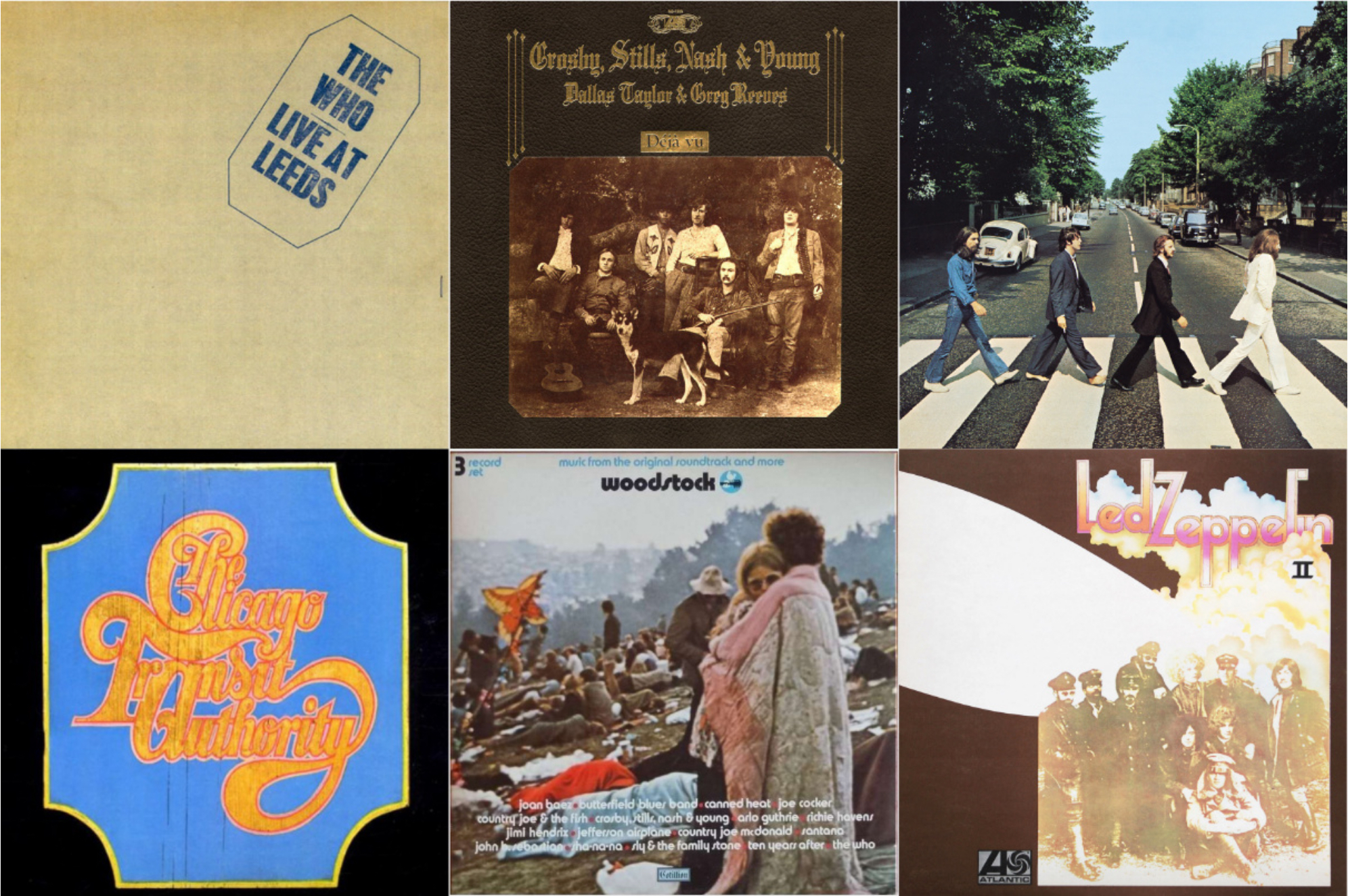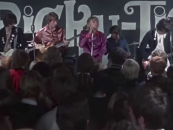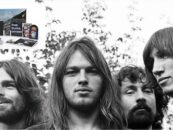Top Selling Albums of 1970: What a Year!
by Best Classic Bands Staff
The first year of a new decade… who could have predicted Watergate, the oil crisis and the Star Wars phenomenon that were to come in the years ahead?
1970 brought the debut of soap opera All My Children. A World’s Fair (remember them?) opened in Osaka, Japan. The Ford Pinto was introduced, as was Monday Night Football.
The plight of the Apollo 13 manned mission to the Moon had us riveted for days, after an oxygen tank exploded. Four students were shot and killed by the Ohio National Guard at Kent State University. Jimi Hendrix and Janis Joplin died, weeks apart.
Recordings made by some of the most enduring classic rock artists dominated the list of 1970’s top-selling albums in the U.S. The chart, compiled by the former music industry trade magazine, Record World, features several all-time classics among the year’s Top 15 sellers. [Note: many of the year’s biggest albums were actually released in 1969.]
At #15, it was the traveling road show to end all traveling road shows when Joe Cocker released Mad Dogs & Englishmen, a live double set that personified the rock ’n’ soul party. The singer, just 25 when it was recorded, was joined by musical director Leon Russell and a “cast of thousands” that included Chris Stainton, Carl Radle, Jim Gordon and Rita Coolidge.
Related: Our deep dive into Mad Dogs & Englishmen
The Rolling Stones‘ Let it Bleed, released in December 1969, includes “Gimme Shelter,” “Midnight Rambler” and “You Can’t Always Get What You Want.” It was #14 for 1970.
Related: Our Album Rewind of the Stones’ “turbulent masterpiece”
Willy and the Poor Boys, at #13, was Creedence Clearwater Revival‘s fourth of five albums released in less than two years. The 1969 album includes “Fortunate Son,” “Down on the Corner” and CCR’s covers of “The Midnight Special” and “Cotton Fields.”
Santana‘s self-titled debut was released two weeks after they electrified the crowd at Woodstock in August 1969. Thanks to their reception and the big single, “Evil Ways,” Santana reached #4 nationally, helping them become 1970’s #12 top seller.
Related: Our interview with Santana drummer Michael Shrieve on playing Woodstock
Though it was released in April 1969, Chicago‘s debut two-record set, Chicago Transit Authority, continued to sell well enough to be 1970’s #11 biggest album. Its songs include “Questions 67 and 68,” “Does Anybody Really Know What Time It Is?” and “Beginnings.”
The debate of what is the best live rock album is sure to include The Who‘s electrifying Live at Leeds. The original release featured just six tracks though the concert featured a far, far lengthier performance that included the entire Tommy rock opera. Its no-frills cover was designed to resemble an album bootleg.
The Beatles’ Let It Be, recorded before Abbey Road but released after it, is where it all ended. Despite the group’s disfunction, the album includes such classics as the title track, “Get Back,” “The Long & Winding Road” and “Across the Universe,” delivering yet another #1 worldwide LP and #8 for the year.
How to top yourselves when your supergroup trio releases one of the most acclaimed albums of 1969? Why, add a fourth member for your follow-up. So, Crosby, Stills and Nash became Crosby, Stills, Nash & Young. Their Déjà Vu reached #1 in the U.S. (#7 for the year) and yielded three hit singles: “Our House,” “Teach Your Children” and “Woodstock,” plus a great lead-off track, “Carry On.” And how cool was that Civil War-era photo and the original leatherette paper used for the album cover?
Paul McCartney recorded his solo debut largely in secrecy at his home recording studio in London. It’s a true solo album as he played all the instruments. (His wife, Linda, sang harmony.) The LP, with such songs as “Maybe I’m Amazed,” “Every Night” and “That Would Be Something,” reached #1 and was the year’s #6 overall. The “reverse” album cover, shot by Linda McCartney, features a fruit bowl on the front, with a photo of a bearded McCartney – with baby Mary in tow – on the back.
Related: What were the top radio hits of 1970?
Cosmo’s Factory, at #5, continued Creedence Clearwater Revival’s remarkable stretch. The album’s track listing reads like a greatest hits collection with such favorites as “Travelin’ Band,” “Who’ll Stop the Rain,” “Up Around the Bend” and “Lookin’ Out My Back Door.”
1969’s Woodstock festival received plenty of coverage on the nightly news and daily newspapers. But it wasn’t until the Woodstock film was released in March 1970 that millions got to see what the experience of being there was like. And in May, the 3-LP set was released on Atlantic’s Cotillion label. And though it was significantly truncated from the hours upon hours of landmark performances, it was the only way for music fans to discover and relish the festival’s songs. The album reached #1 and was the year’s 4th biggest seller.
As far as artist swan songs go, Simon & Garfunkel‘s final album is about as good as any recorded farewell we can think of. On March 7, it hit #1 on the album chart and spent 10 weeks there – longer than any other album in 1970. It won the Grammy for Album of the Year, among its four wins. The title cut became the duo’s third #1 chart hit; “The Boxer” reached #7. The result: #3 overall for 1970.
The Beatles’ Abbey Road, a near-perfect LP released in late 1969, is one of the handful of albums in the conversation for best of all-time. Yet it didn’t win the 1970 Grammy for Album of the Year. (That went to Blood, Sweat & Tears’ self-titled album.) The worldwide smash was the year’s #2 album in the U.S.
Related: The 5 Album of the Year Grammys From 1970-1974
At #1? Surprise! Led Zeppelin‘s second release of 1969 took the band to new heights and gifted their fans to “Whole Lotta Love” which, at a time when rock music was embraced by Top 40 radio, introduced the band to even bigger audiences.
Related: Our look at 50 great albums released in 1970
15. Mad Dogs & Englishmen – Joe Cocker
14. Let it Bleed – The Rolling Stones
13. Willy & the Poor Boys – Creedence Clearwater Revival
12. Santana – Santana
11. Chicago Transit Authority – Chicago
10. Live at Leeds – The Who
9. Tom Jones Live in Las Vegas – Tom Jones
8. Let it Be – The Beatles
7. Déjà Vu – Crosby, Stills, Nash & Young
6. McCartney – Paul McCartney
5. Cosmo’s Factory – Creedence Clearwater Revival
4. Woodstock (Music From the Original Soundtrack and More)
3. Bridge Over Troubled Water – Simon & Garfunkel
2. Abbey Road – The Beatles
1. Led Zeppelin II – Led Zeppelin
Related: Links for 100s of classic rock tours






6 Comments so far
Jump into a conversation1970 was not “the first year of a new decade.” In fact, it was the last year of an old decade (the first decade of the 20th century was 1901-1910, for example). However, you could say it was the first year of the period commonly referred to as the Seventies.
Hmmm… Batchman, I’ll stick with what I’ve got. From our friends at Wiki: “The 1970s was a decade of the Gregorian calendar that began on January 1, 1970, and ended on December 31, 1979.”
Batchman,
you are correct, each decade starts at day 1, month 1, year 1, continuing through year 10.
No calendar started a year “0”, nor could a decade.
As you politely recommended, could say it was the first year of the period commonly referred to as the Seventies.
The Seventies were a great decade for all genres of music. The second album from Zeppelin is a rock masterpiece.
Indeed! I couldn’t believe it when I first heard it. A new sound, and every track a hit.
1970 was a great transition year. Look at the list – how many acts do you associate more with the 60s than the 70s?
Simon & Garfunkel? CCR? Beatles?
How many cover both? The Stones. CSNY individually and in previous bands. The Beatles as a group (60s) and solo (70s).
By the end of the year, we were solidly into the 70s, the last two Lps hitting #1 (Billboard) being Abraxas and Zep III. To be followed in early 1971 by George’s masterpiece All Things Must Pass.